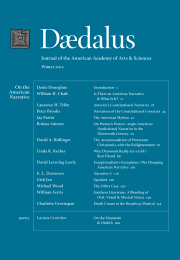Southern Literature: A Blending of Oral, Visual & Musical Voices
The blending of oral traditions, visual arts, and music has influenced how Southern writers shape their region’s narrative voice. In the South, writing and storytelling intersect. Mark Twain introduced readers to these storytellers in “Adventures of Huckleberry Finn.” Twain blends both black and white voices within Huck’s consciousness and awareness – in Huck’s speech and thoughts – and in his dialogues with Jim. A narrative link exists between the South’s visual artists and writers; Southern writers, after all, live in the most closely seen region in America. The spiritual, gospel, and rock and roll are musical genres that Southern writers love – although jazz, blues, and ballads might have the most influence on their work. Southern poets and scholars have produced anthologies, textbooks, and literary journals that focus on the region’s narrative voice and its black and white literary traditions. Southern writers have created stories that touch the heart and populate American literature with voices of the American South. Future Southern writers will continue to embrace the region as a place where oral, visual, and musical traditions are interwoven with literature.
This essay reflects my perspective as a folklorist who for the past forty years has studied the American South and the intersection of the region’s literature with oral traditions, visual arts, and music.1 The blending of these worlds has had a significant impact on Southern writers and how they shape their region’s narrative voice.2 Perhaps more than any other region in America, the South is a place where writing and storytelling intersect. Nail by nail, as carpenters of the imagination, Southern writers construct their region’s narrative, and the tale and its telling are the grist for this literary mill.
Mark Twain introduced his readers to these storytellers in Adventures of Huckleberry Finn, the novel that forever defined the American narrative–a narrative with its heart in the tale. As Twain reminded his readers, “The art of telling a humorous story– understand, I mean by word of mouth, not print –was created in America, and has remained at Home.”3 When Huck declares he will “light out for . . .
Endnotes
- 1Parts of this article are drawn from The Southern Voice: Writers, Artists and Composers by William Ferris. © 2013 by William Ferris. Forthcoming in 2013 from the University of North Carolina Press (www.uncpress.unc.edu). Used by permission of the publisher. I am indebted to my wife, Marcie Cohen Ferris, my daughter, Virginia Ferris, and my colleagues Ayse Erginer and Dave Shaw for their invaluable comments and suggestions on this workpiece.
- 2My understanding of these worlds has been influenced by Robert Farris Thompson, whose work taught me how music, dance, and art often intersect in African and African American cultures. Thompson suggests that we can “see” syncopated musical rhythms reflected in the patterns of folk quilts and in the collages of Romare Bearden. Katherine Coryton White and Robert Farris Thompson, African Art in Motion: Icon and Act in the Collection of Katherine Coryton White (Berkeley: University of California Press, 1979); Robert Farris Thompson, “African Influence on the Art of the United States,” in Afro-American Folk Art and Crafts, ed. William Ferris (Jackson: University Press of Mississippi, 1983), 27–66.
- 3Mark Twain, How to Tell a Story and Other Essays (New York: Oxford University Press, 1996), 4. While Twain was not born in the South, he is considered a major influence on the region’s literary tradition. In his preface to The Literature of the American South, William L. Andrews describes Twain as “one of southern literature’s defining artists. Some of his greatest books –Life on the Mississippi (1883), Huckleberry Finn (1884), and Pudd’nhead Wilson (1894)–have southern settings, deal with people and institutions readily identifiable with the South, and are told in a style and language that carry a distinctively southern inflection. Hence, for most southerners, Mark Twain belongs to Dixie”; The Literature of the American South, ed. William L. Andrews (general editor), Minrose C. Gwin, Trudier Harris, and Fred Hobson (New York: W.W. Norton, 1998), xvi.
